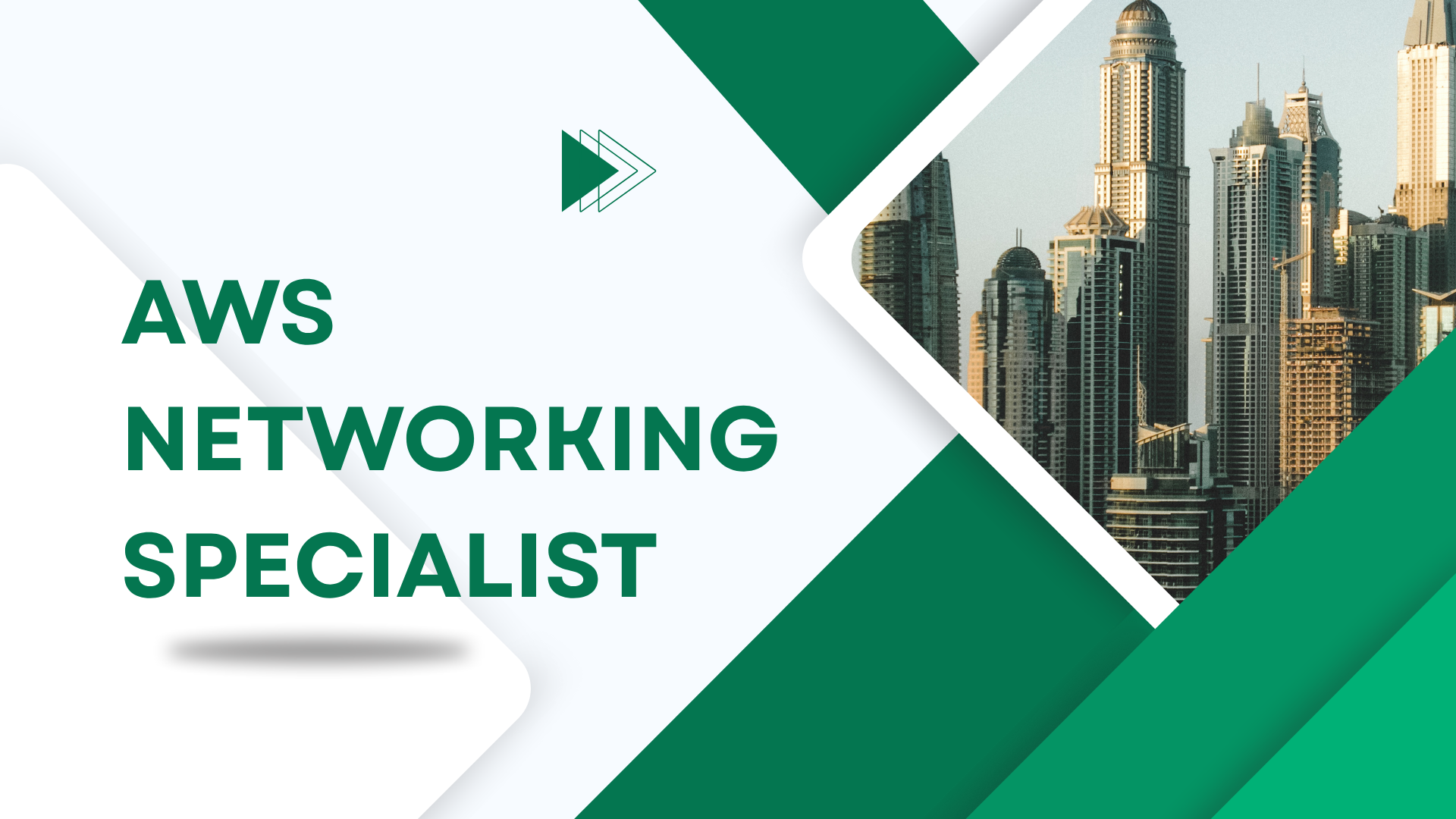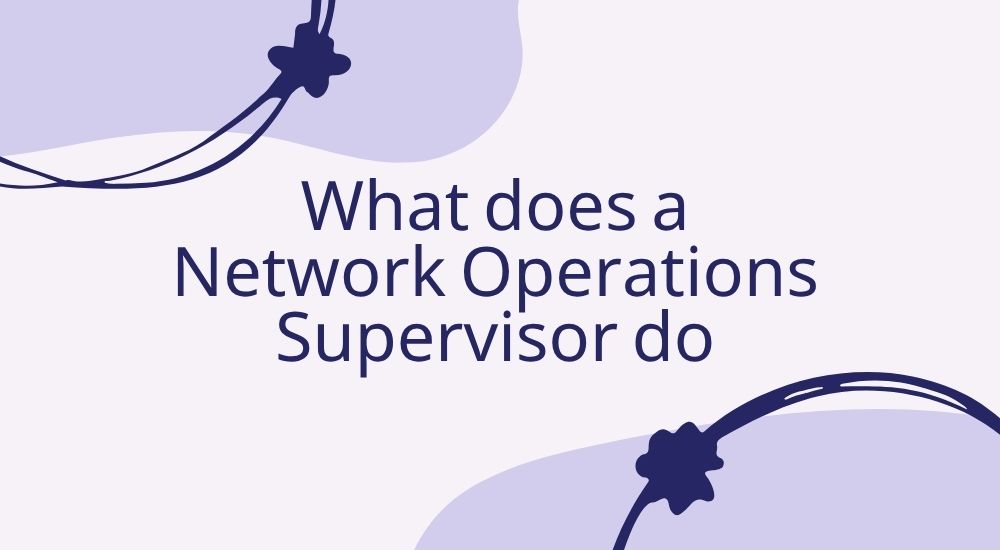TRUSTED BY THE SMARTEST TEAMS IN THE WORLD FOR CERTIFIED CANDIDATES
SPOTO Blogs
Useful learning materials to become certified IT personnel
-
- 408
- Emma
- 2025-06-19 12:07
-
- 697
- SPOTO
- 2025-06-19 11:00
-
- 724
- SPOTO
- 2025-06-19 10:35
-
- 572
- Emma
- 2025-06-18 12:18
-
- 578
- SPOTO
- 2025-06-18 12:04
-
- 311
- Emma
- 2025-06-18 11:58
-
- 914
- SPOTO
- 2025-06-18 11:42
-
- 546
- Emma
- 2025-06-17 12:26
-
- 378
- Emma
- 2025-06-17 11:59
TRUSTED BY THE SMARTEST TEAMS IN THE WORLD FOR CERTIFIED CANDIDATES
SPOTO Blogs
Useful learning materials to become certified IT personnel
-
- 408
- Emma
- 2025-06-19 12:07
Table of Contents1. What is a Big Data Engineer?2. What does a data engineer do?3. Salary & Job Outlook4. How to Become a Big Data Engineer?5. Conclusion Are you fascinated by the sheer volume of data generated every second and wondering how businesses harness this information to make smarter decisions? Or perhaps you're contemplating a career shift into a rapidly growing tech field that offers excellent compensation and future prospects? If so, you're not alone—the demand for big data professionals has never been higher. In this article, we'll explore the role of a Big Data Engineer—what they do, how they differ from Data Scientists, the skills required, salary outlook, and the best pathways to enter this high-demand career. Let's start with the basics. 1. What is a Big Data Engineer? A Big Data Engineer is a specialist responsible for designing, developing, and maintaining the infrastructure that allows organizations to process, analyze, and leverage massive data sets—commonly called "big data." These professionals build scalable data pipelines, optimize data storage solutions, and implement systems that ensure data is accessible and clean for analysis. In an era where companies collect terabytes and petabytes of data daily, big data engineers are the backbone that makes data-driven decision-making possible. They work with cutting-edge technologies like Hadoop, Spark, Kafka, and cloud platforms to build reliable and efficient data ecosystems. 2. What does a data engineer do? Typical Job Responsibilities Big Data Engineers have several core responsibilities: Designing and implementing data pipelines using ETL (Extract, Transform, Load) processes Creating and managing scalable data architectures tailored to business needs Building and optimizing data storage solutions such as data lakes and data warehouses Writing high-performance code with languages like Java, Python, or C++ Collaborating with data scientists and analysts to ensure data quality and accessibility Researching new data collection methods and improving existing systems In essence, their primary goal is to ensure that data flows seamlessly across the organization, is structured properly, and is ready for analysis. Skills & Technologies Needed To excel as a big data engineer, you should develop expertise in Programming languages: Python, Java, C++ Big data tools: Hadoop, Spark, Kafka, Hive Databases: SQL, NoSQL, MongoDB, Cassandra Cloud platforms: AWS, Google Cloud, Azure Data modeling and architecture design Data warehousing and ETL processes Acquiring these skills requires structured learning and hands-on practice. Fortunately, SPOTO offers specialized courses that can accelerate your learning curve—like their Big Data and Data Engineering certification programs, which cover everything from foundational concepts to advanced tools. These courses are designed for learners with various backgrounds and include real-world projects to prepare you for industry roles. 3. Salary & Job Outlook The outlook for big data engineers is highly promising: Average Salary: In the US, the average salary exceeds $130,000 annually, with higher figures for experienced professionals. Job Growth: The U.S. Bureau of Labor Statistics projects an impressive growth rate of 26% between 2023 and 2033 for related roles like computer and information research scientists, highlighting a thriving industry. In India, salaries are competitive, with mid-level engineers earning upwards of ₹730,000 per year, and opportunities booming in tech hubs like Bangalore. As organizations continue to leverage big data for competitive advantage, the demand for skilled engineers will only accelerate. 4. How to Become a Big Data Engineer? Here's a step-by-step roadmap: Educational Foundation A bachelor's degree in computer science, data science, or a related field is essential. Advanced degrees can further boost your prospects. Gain Practical Experience Internships, freelance projects, or entry-level roles in data management can build your hands-on skills. Certifications & Training Professional certification validates your expertise. Certifications from Google Cloud Certified Professional Data Engineer, IBM IBMCertified Data Engineer, or Cloudera are highly valued. Keep Learning The field evolves rapidly—staying updated with new tools, frameworks, and best practices is crucial. To streamline your path, consider enrolling in SPOTO's comprehensive Data Engineering courses. Their curriculum covers essential technologies like Hadoop, Spark, cloud data services, and more, with expert guidance to ensure you gain real-world skills. 5. Conclusion The role of a Big Data Engineer is essential in today's data-driven world. It offers the opportunity to work on cutting-edge technologies, solve complex problems, and contribute to organizational growth—also, with attractive compensation and high job stability. Whether you're a fresh graduate or a seasoned professional seeking a career pivot, this field has immense potential. Equipping yourself with the right skills through top-tier courses from SPOTO can open doors to exciting opportunities in big data. Are you ready to make the leap and become a pivotal part of tomorrow's data revolution? Start your journey today with SPOTO's specialized programs and unlock a future where data is your greatest asset. -
- 697
- SPOTO
- 2025-06-19 11:00
Table of Contents1. What is an Observability Engineer?2. What does an Observability Engineer do?3. Observability Engineer salary4. Job Outlook of Observability Engineer5. What Are the Qualifications to Become an Observability Engineer?6. Similar Occupations of Observability Engineer This article will introduce you to what an Observability Engineer is, the career information of an Observability Engineer and the necessary conditions to become an Observability Engineer. 1. What is an Observability Engineer? Observability Engineers are problem solvers for enterprise systems who focus on optimizing system performance, ensuring reliability, and gaining actionable insights from telemetry data. They are the primary drivers of data-driven solutions and operations. 2. What does an Observability Engineer do? Observability engineers are technicians who interpret complex IT systems. Their main responsibilities include the collection, processing, analysis, and visualization of data. Specifically, by carefully examining this data, they can identify trends, discover anomalies, and gain insight into system behavior. Observability engineers mitigate the impact of potential problems on users by pre-emptively resolving them. Secondly, they play a vital role in ensuring that the system complies with relevant laws and regulations to ensure the security and compliance of the system. Finally, managing logs (such as security event logs, firewall logs, and VPC flow logs) is an important part of the observability engineer's job. They ensure that logs are collected, stored, and analyzed effectively to help diagnose problems, monitor security, and ensure compliance. 3. Observability Engineer salary According to Glassdoor data from April 10, 2025, the average annual salary for observability engineers in the United States is $158,217. Starting salaries for entry-level positions may be around $80,000, while starting salaries for senior or professional positions may exceed $200,000. 4. Job Outlook of Observability Engineer Observability engineers are increasingly important in managing the complexity and unpredictability of modern IT systems. Their specialized skills and expertise enable them to troubleshoot potential issues, optimize system performance, and ensure reliability. As technology advances, the demand for observability engineers will only increase. Organizations committed to achieving success in IT operations must invest in these professionals. 5. What Are the Qualifications to Become an Observability Engineer? (1) Obtain a Bachelor's Degree The necessary education level is the first step to start a career. The work content of Observability Engineer mainly revolves around risk analysis in the business environment. A degree in finance, business administration, accounting or related fields is likely to be favored by employers. (2) Develop professional skills Observability Engineers first need to be proficient in using tools such as Prometheus, Grafana, ELK, Jaeger, Splunk, Datadog, Dynatrace, etc., to build log, indicator and distributed tracing systems, and build real-time monitoring dashboards, alarm mechanisms and root cause analysis processes. In addition, they must master cloud native technologies such as Kubernetes, microservice architecture and service mesh (such as Istio, Linkerd), and understand how to connect observability to cloud platforms such as AWS, Azure, GCP, etc. Furthermore, programming skills are also very important for Observability Engineers, especially the ability to write scripts or data processing tools in languages ​​such as Python, Go, JavaScript, etc. Finally, excellent communication and coordination skills are required to connect infrastructure, development, network, and security teams to jointly design and implement observability solutions. (3) Earn Industry Certifications Obtaining a certification that is highly recognized by the industry can prove your professional ability and ability to perform the position, and can also enhance your competitiveness in the workplace. Therefore, we recommend that you obtain the Cisco DevNet Expert certification.Earning the Cisco Certified DevNet Specialist certification will demonstrate your expertise and proficiency in network automation, programmability, and security automation tools. 6. Similar Occupations of Observability Engineer Site Reliability Engineer (SRE) DevOps Engineer Infrastructure Engineer Performance Engineer System Administrator Platform Engineer Release Engineer Build and Release Engineer Cloud Consultant -
- 724
- SPOTO
- 2025-06-19 10:35
Table of Contents1. What is a Sd-Wan Engineer?2. What does a Sd-Wan Engineer do?3. Sd-Wan Engineer Salary4. What Are the Qualifications to Become a Sd-Wan Engineer ?5. Similar Occupations of Sd-Wan Engineer This article will introduce you to what a Sd-Wan Engineer is, the career information of a Sd-Wan Engineer and the necessary conditions to become a Sd-Wan Engineer. 1. What is a Sd-Wan Engineer? SD-WAN is a software-defined wide area network management method. SD-WAN Engineer refers to a professional network technician who is responsible for developing, configuring and implementing the SD-WAN system of an enterprise or organization. 2. What does a Sd-Wan Engineer do? SD-WAN engineers mainly help enterprises build software that supports instant communication, higher security and higher performance. Therefore, they need to have expertise in SD-WAN systems to provide security functions and traffic control for the organization's wide area network. In addition, SD-WAN engineers usually work with other systems engineering teams to mainly assist in the development of SD-WAN configurations and provide advice and expertise for system construction and implementation within the organization or for the organization's customers. 3. Sd-Wan Engineer Salary According to ZipRecruiter's June 11, 2025 data, the average annual salary for SD Wan engineers in the United States is $87,220. That's about $41.93 per hour. That's equivalent to $1,677 per week or $7,268 per month. The highest annual salary can be as high as $136,500, and the lowest is only $37,000, but most SD Wan engineers currently make between $76,500 and $97,500 per year, with the highest earners making as much as $114,500 per year across the United States. The average salary range for SD Wan engineers varies widely (up to $21,000), which means they may have many opportunities for advancement and pay increases depending on skill level, location, and years of experience. 4. What Are the Qualifications to Become a Sd-Wan Engineer ? (1) Obtain a Bachelor's Degree When hiring a Sd-Wan Engineer, employers usually want candidates with relevant professional backgrounds to find candidates with the appropriate skills. These academic backgrounds provide them with courses related to professional skills. The position of Sd-Wan Engineer usually requires candidates to have at least a bachelor's degree in computer science, information technology or computer engineering. Of course, some industries or companies will require higher academic qualifications. (2) Develop professional skills SD-WAN engineers usually need to have comprehensive network basics, automation skills, and cloud platform integration capabilities. First, they need to have a deep understanding of wide area network (WAN)-related technologies and protocols, including MPLS, IPSec, GRE, DMVPN, BGP, OSPF, static routing, QoS, etc., and be proficient in the differences and collaboration between the control plane, management plane, and data plane in the network hierarchy. In addition, with the continuous advancement of network automation, mastering Python script programming, Ansible orchestration tools, YAML/JSON configuration file formats, API calling methods, etc. have become essential skills for SD-WAN engineers. Finally, as more and more enterprises adopt hybrid cloud or multi-cloud architectures, SD-WAN engineers should also have certain cloud platform knowledge, be able to seamlessly connect SD-WAN solutions with cloud services such as AWS, Azure, and GCP, configure VPC, VPN, and cloud routing, and achieve unified management of cloud and local networks. (3) Earn Industry Certifications Obtaining a certification that is highly recognized by the industry can prove your professional ability and ability to perform the position, and can also enhance your competitiveness in the workplace. Therefore, we recommend that you obtain the Cisco DevNet Expert certification.Earning the Cisco Certified DevNet Specialist certification will demonstrate your expertise and proficiency in network automation, programmability, and security automation tools. 5. Similar Occupations of Sd-Wan Engineer Network Engineer Network Administrator Network Analyst Network Architect Network Security Engineer System Engineer Network Operations Engineer Network Consultant -
- 572
- Emma
- 2025-06-18 12:18
Table of Contents1. An Overview of an AWS Networking Specialist2. What Does an AWS Networking Specialist Do?3. Why Become an AWS Networking Specialist?4. How to Become an AWS Networking Specialist?5. Conclusion Have you been curious about how global businesses seamlessly connect their diverse infrastructure and services across the world? How do they ensure their networks are secure, scalable, and reliable? Behind these marvels lies the expertise of professionals specialized in cloud networking—particularly, AWS Networking Specialists. In today's digital era, cloud technology underpins much of our daily operations, and Amazon Web Services (AWS) is at the forefront of this transformation. This article will explore what an AWS Networking Specialist does, the tasks involved, the career prospects, and how you can embark on this lucrative and dynamic profession. 1. An Overview of an AWS Networking Specialist An AWS Networking Specialist is an IT professional specializing in designing, implementing, and maintaining network solutions within the AWS Cloud environment. This role is central to ensuring organizations can securely and efficiently operate their digital infrastructure by leveraging AWS services. In essence, they act as the architects and guardians of cloud connectivity, ensuring that data moves seamlessly and securely across cloud and on-premises networks. These experts are instrumental in supporting cloud migration, disaster recovery, and cloud-native application deployment. 2. What Does an AWS Networking Specialist Do? Tasks and Responsibilities of an AWS Networking Specialist The responsibilities of an AWS Networking Specialist are diverse, requiring a spectrum of technical skills and problem-solving abilities. Key duties include: Designing AWS Network Architecture: Crafting scalable and secure network layouts for cloud environments, including configuring VPCs, subnets, NAT gateways, VPNs, and peering connections. Implementing Security Measures: Applying best practices for network security using security groups, Network Access Control Lists (ACLs), IAM policies, and AWS Shield to secure data and resources. Traffic Management and Optimization: Ensuring optimized data flow using tools like Route 53 for DNS management, load balancers, and Edge locations for content delivery. Monitoring and Troubleshooting: Utilizing AWS CloudWatch, VPC Flow Logs, and third-party tools to monitor network performance and resolve issues proactively. Migrating and Integrating Networks: Facilitating hybrid cloud solutions through Direct Connect and VPNs, linking on-prem data centers with AWS. Documentation and Compliance: Maintaining detailed documentation and ensuring network infrastructure complies with security standards and regulatory requirements. Related Job Opportunities Cloud Network Engineer Cloud Infrastructure Engineer AWS Solutions Architect Network Security Engineer 3. Why Become an AWS Networking Specialist? Growing Demand for AWS Networking Specialists The shift to cloud-first strategies propels the need for experts who can architect robust, secure, and scalable cloud networks. According to industry reports, AWS holds over 30% of the cloud market share, and this dominance translates into a persistent talent gap. Organizations are eager to hire professionals who can optimize their AWS infrastructure for performance, compliance, and cost-efficiency, making this a promising career path. Salary Outlook The earning potential for AWS Networking Specialists is impressive. Entry-level specialists can expect salaries starting from $80,000 to $110,000 annually, with experienced professionals earning well over $150,000, especially those holding industry-recognized certifications. As your expertise grows, so does your earning power, making it a financially rewarding career. Diverse Challenges and Opportunities for Growth This role offers the chance to work on cutting-edge projects, from designing multi-region cloud networks to implementing sophisticated security frameworks. It's an industry that demands continuous learning—staying updated with AWS innovations and emerging cybersecurity threats. For those passionate about technology, this field provides endless learning opportunities and career advancement. 4. How to Become an AWS Networking Specialist? Starting your journey requires acquiring a solid foundation in networking concepts and cloud computing. Here's a step-by-step approach: Learn Networking Basics: Understand TCP/IP, DNS, VPNs, and firewalls. Gain AWS Fundamentals: Familiarize yourself with core AWS services through introductory courses. Obtain Relevant Certifications: Start with AWS Certified Cloud Practitioner and progress to AWS Certified Advanced Networking—Specialty. Hands-On Practice: Build real-world skills by setting up networks in the AWS Free Tier, practicing with labs, and participating in projects. Gain Practical Experience: Look for internships or entry-level roles in cloud or network administration. Stay Updated: Follow AWS updates, participate in webinars, and join professional networks and forums. 5. Conclusion Becoming an AWS Networking Specialist is a smart career choice for tech enthusiasts eager to work at the intersection of networking and cloud computing. The role offers excellent job stability, competitive salaries, and the chance to be at the forefront of digital innovation. If you're ready to take the leap, comprehensive training programs like SPOTO can provide the guidance and practical skills needed to excel. With dedication, continuous learning, and the right mentorship, you can unlock a rewarding career in the rapidly expanding world of cloud networking. So, what are you waiting for? Step into the future of technology—your career as an AWS Networking Specialist awaits! -
- 578
- SPOTO
- 2025-06-18 12:04
Table of Contents1. What is a Network Operations Supervisor?2. What does a Network Operations Supervisor do?3. How much does a Network Operations Supervisor Make?4. Job Outlook of Network Operations Supervisor5. Similar Occupations of Network Operations Supervisor6. What Are the Qualifications to Become a Network Operations Supervisor? 1. What is a Network Operations Supervisor? A Network Operations Supervisor is a professional network technician who is responsible for overseeing the daily operations of a company or organization's network control center. 2. What does a Network Operations Supervisor do? The network operations supervisor is mainly responsible for organizing the daily or shift management of the network system, ensuring the stable operation of network hardware, software, security mechanisms and related services, and meeting the established performance standards. This position requires the implementation and implementation of policies and procedures related to network operation and maintenance to ensure compliance with industry standards and compliance requirements, effectively reduce interruption time, and improve overall operation and maintenance efficiency. The network operations supervisor also needs to guide and train technical personnel and network administrators, promote the application of best operating practices and new technology tools. At the same time, he is responsible for continuous monitoring of network operation status and recording events and system changes. When a network failure occurs, it is necessary to conduct timely troubleshooting and repair, and participate in root cause analysis (RCA) to prevent repeated failures and promote optimization of technology, processes or personnel capabilities. Automation of routine tasks is also one of the work contents, and basic scripts may need to be written to simplify operations. In addition, the network operations supervisor also needs to participate in budget formulation and tool and equipment procurement recommendations to ensure reasonable resource allocation and complete operation and maintenance tools. 3. How much does a Network Operations Supervisor Make? According to ZipRecruiter, the average annual salary for a Network Operations Supervisor in California is $100,342 per year as of June 10, 2025. That works out to about $48.24 per hour. That works out to $1,929 per week or $8,361 per month. Salaries range from as high as $144,582 to as low as $21,712, but most Network Operations Supervisor salaries currently range from $83,900 to $112,500, with the top earners making $139,647 per year in California. The average salary range for a Network Operations Supervisor varies widely (as much as $28,600), which means there may be many opportunities for advancement and increased pay based on skill level, location, and years of experience. 4. Job Outlook of Network Operations Supervisor The Job Outlook of Network Operations Supervisor is generally optimistic and strong. According to the U.S. Bureau of Labor Statistics, employment of computer and information systems managers is expected to grow 17% from 2023 to 2033, much faster than the average for all occupations. An average of about 54,700 computer and information systems manager job openings are expected to be created each year over the next decade. Many of these job openings are expected to be filled by people who change careers or exit the workforce (e.g., due to retirement). 5. Similar Occupations of Network Operations Supervisor Network Manager Network Engineer Network Administrator IT Support Specialist Network Operations Center Engineer Network Operations Center Analyst Network Technician System Administrator 6. What Are the Qualifications to Become a Network Operations Supervisor? (1) Obtain a Bachelor's Degree When hiring Network Operations Supervisor, employers will require applicants to have at least a bachelor's degree in computer-related majors. According to relevant recruitment information, this position tends to recruit majors including computer science, computer programming, computer networks, information systems, information security, and network security. (2) Develop professional skills When you serve as a "network operations supervisor", first of all, you need to have a solid technical foundation. This includes an in-depth understanding of network architecture, such as the configuration of local area networks (LANs) and wide area networks (WANs), and familiarity with the working principles of hardware devices such as switches, routers, and firewalls. In addition, mastering network protocols is also essential. Knowledge of protocols such as TCP/IP, DNS, and DHCP can help you efficiently troubleshoot and solve daily network problems. Moreover, with the increasing complexity of corporate networks, network monitoring and performance analysis skills have become particularly important. You need to be able to use some common monitoring tools (such as SolarWinds or Nagios) to monitor the network in real time, and be able to quickly identify and solve performance bottlenecks or latency problems. Secondly, troubleshooting ability is also one of the core skills of a network operations supervisor. When a network failure occurs, you must quickly locate the problem and take effective solutions. In addition, root cause analysis (RCA) should also be part of your daily work to ensure that similar problems do not occur again. In order to improve work efficiency, you also need to have certain automation capabilities, such as using scripts (Python, Bash, or PowerShell) to automate daily network tasks and reduce the work pressure of the team. In addition to these hard skills, as a network operations supervisor, it is equally important to have the ability to manage a team and coordinate communication. Not only do you need to manage a technical team, assign daily tasks, and supervise work progress, but you also need to be able to handle conflicts between team members and maintain the team's enthusiasm and collaboration. (3) Earn Industry Certifications Obtaining a certification that is highly recognized by the industry can prove your professional ability and ability to perform the position, and can also enhance your competitiveness in the workplace. Therefore, we recommend that you obtain the Cisco Advanced Security Architecture for Enterprise Architecture Management certification.Cisco 700-760 ASAEAM (Advanced Security Architecture for Enterprise Architecture Management) is one of Cisco's certification exams, focusing on advanced security architecture and enterprise architecture management. People who obtain this certification usually have in-depth knowledge in network security and enterprise architecture, and can play an important role in designing, implementing, maintaining and optimizing enterprise-level network security architecture. -
- 311
- Emma
- 2025-06-18 11:58
Table of Contents1. Benefits of Cloud Certifications in 20252. Scope of Cloud Certifications3. Top Cloud Certifications to Pursue in 20254. Factors to Consider Before Choosing a Cloud Certification5. Summary Have you ever wondered how some IT professionals seem to climb the career ladder seamlessly, landing high-paying jobs and exciting projects? The secret often lies in the right certifications—especially in the rapidly evolving world of cloud computing. As cloud technology continues to reshape the IT landscape, earning a cloud certification isn't just a good idea; it's becoming a necessity for those aiming to stay competitive in 2025. In this article, we'll explore the benefits of cloud certifications in 2025, the scope of what these certifications cover, top certifications to pursue this year, and key factors to consider before choosing the right path for yourself. Whether you're an aspiring cloud engineer or an experienced IT pro looking to optimize your skills, this guide aims to help you make informed decisions on your certification journey. 1. Benefits of Cloud Certifications in 2025 Why invest time and resources into cloud certifications today? The benefits are compelling and multifaceted: A. Increased Job Opportunities and Salary Potential Cloud computing is the backbone of digital transformation, used by over 93% of enterprises worldwide. Certified professionals are in high demand, with companies eager to fill roles like Cloud Engineer, Solutions Architect, Cloud Security Specialist, and DevOps Engineer. According to industry reports, cloud-certified professionals often command salaries 20-30% higher than their non-certified counterparts. B. Validation of Skills and Expertise Certifications provide credible proof of your technical skills and knowledge, which is crucial in an increasingly competitive job market. They demonstrate your commitment to staying current with technological advancements. C. Enhanced Career Growth and Mobility With a recognized certification, you'll be better positioned for promotions or lateral moves into specialized cloud roles. Many organizations value certification as a marker of professionalism and expertise, opening doors for leadership opportunities. D. Access to a Rich Ecosystem and Resources Preparing for cloud certifications connects you to a global community of professionals, training resources, and industry events. This network can be invaluable for continuous learning and career advancement. 2. Scope of Cloud Certifications With the advancement of careers and businesses, the popularity of top cloud computing certifications will demonstrate unlimited potential. As more business models and domains become dependent on cloud computing, more interesting job roles and career paths will emerge. Here is a brief overview of the scope of cloud computing certifications: Virtualization As enterprises' needs for on-premises deployment and public cloud increase, virtualization is gaining popularity day by day. Virtualization can not only significantly improve operational efficiency but also reduce IT costs, enhance the flexibility and responsiveness of on-premises environments, and thus achieve long-term cost savings. Network Architecture Network virtualization is the next thriving direction in the cloud computing landscape. Mastering network virtualization technology requires the ability to design, manage, and implement network and security management, which helps enterprises enhance agility, security, and operation speed. If you wish to make achievements in the field of network management and architecture, obtaining a certification in this domain is a good choice. Automation and Cloud Management Enterprises need professionals to improve consistency and scalability and enhance system agility by automating manual processes and delivering infrastructure. Obtaining relevant certifications can prove your ability to configure, install, and optimize automated resources. 3. Top Cloud Certifications to Pursue in 2025 The cloud certification landscape is crowded, but some credentials stand out for their popularity, industry recognition, and return on investment: A. AWS Certified Solutions Architect – Associate & Professional As the market leader, AWS certifications remain highly valued. The Solutions Architect certifies your ability to design distributed systems on AWS, a critical skill given AWS's dominance. B. Microsoft Certified: Azure Solutions Architect Expert Azure's popularity is soaring among enterprises, especially those relying on Microsoft ecosystems. This certification validates your ability to develop and implement solutions using Azure services. C. Google Cloud Professional Cloud Architect Google Cloud's certifications are gaining traction due to their emphasis on modern, scalable infrastructure and machine learning integration. D. Cisco CCNA Cloud & DevNet Certifications For professionals aiming to specialize in cloud networking and automation, Cisco offers robust certifications aligned with industry needs. 4. Factors to Consider Before Choosing a Cloud Certification Before diving into a certification, it's essential to align your choice with your career goals, experience, and interests. A. Your Current Skill Level Begin with foundational certifications like AWS Certified Cloud Practitioner or Microsoft Azure Fundamentals if you're new to cloud. More advanced options like the AWS Certified Solutions Architect – Professional or Google Cloud Professional Cloud Architect are suitable for experienced professionals. B. Your Career Aspirations Identify your target roles: system administrator, architect, security specialist, or developer. Choose certifications that align with your desired position. C. Industry Demand and Trends Research which cloud platforms are most prevalent in your region or industry. For example, finance and healthcare sectors might favor Azure certifications, whereas tech startups lean towards AWS. D. Certification Content and Exam Difficulty Assess whether the certification content matches your interests and whether you're ready for the exam’s complexity. E. Training Resources and Support Look for reputable training programs. SPOTO offers tailored courses that simplify complex topics, provide practice exams, and offer mentorship—all crucial for success. 5. Summary The cloud industry continues its explosive growth, and staying ahead requires continuous learning and certification. In 2025, cloud certifications offer unmatched benefits: Elevated earning potential Increased job opportunities Validation of your skills Enhanced career mobility Future-proofing your expertise Now is the perfect time to invest in your future. By earning a credible cloud certification, you're not just enhancing your resume—you're transforming your career and opening doors to incredible opportunities in 2025 and beyond. Ready to skyrocket your IT career? Explore SPOTO's cloud certification courses today and take the first step toward becoming a cloud expert! -
- 914
- SPOTO
- 2025-06-18 11:42
Table of Contents1. What is an Risk Management Specialist?2. What does an Risk Management Specialist do?3. How much does an Risk Management Specialist Make?4. Job Outlook of Risk Management Specialist5. Similar Occupations of Risk Management Specialist6. What Are the Qualifications to Become an Risk Management Specialist? 1. What is an Risk Management Specialist? Risk management experts are responsible for detecting, identifying, and analyzing potential risks that may affect the financial stability, reputation, or operations of an organization, and taking necessary measures to intervene and eliminate these risks to ensure the safety and stability of the enterprise's operations. These risks cover a wide range of areas, including financial risks, operational risks, regulatory compliance, cybersecurity threats, natural disasters, and more. 2. What does an Risk Management Specialist do? Risk management experts are mainly responsible for helping companies identify, evaluate and control risks that may have an adverse impact on business operations, financial status or reputation. First, they need to make reasonable use of risk models, data analysis and market trend research to predict the probability of potential risks and their impact. Then, based on these analysis results, risk management experts will develop specific risk response strategies, such as implementing risk control measures, purchasing insurance, or establishing emergency plans. At the same time, they will also work closely with finance, legal affairs, operations and other departments to ensure that risk management strategies can be integrated into the overall business process and comply with corporate policies and regulatory requirements. In addition, risk management experts need to regularly monitor risk status, adjust strategies according to changes in the external environment or internal needs, and report risk status and response results to senior management. Their work is crucial for companies to reduce losses, improve stability and ensure long-term development. 3. How much does an Risk Management Specialist Make? According to ZipRecruiter, the average annual salary for a Risk Management Specialist in California is $71,972 as of June 10, 2025. That works out to about $34.60 per hour. That works out to $1,384 per week or $5,997 per month. Salaries range from as high as $136,687 to as low as $37,009, but most Risk Management Specialists currently make between $49,300 and $83,400, with top earners making $127,804 per year in California. The average pay range for a Risk Management Specialist varies greatly (as much as $34,100), which suggests there may be many opportunities for advancement and increased pay based on skill level, location, and years of experience. 4. Job Outlook of Risk Management Specialist As companies' need to manage and mitigate potential risks increases, the market demand for risk management experts is rising. According to data from the careerexplorer website, there are currently about 136,000 risk management experts in the United States. It is expected that the job market for risk management experts will grow by 6.0% between 2022 and 2032. 5. Similar Occupations of Risk Management Specialist Risk Analyst Compliance Analyst Operational Risk Analyst Risk Manager Director of Risk Management Chief Risk Officer (CRO) Credit Risk Analyst Market Risk Analyst Compliance Officer Risk Consultant 6. What Are the Qualifications to Become an Risk Management Specialist? (1) Obtain a Bachelor's Degree The necessary education level is the first step to start a career. The work content of Risk Management Specialist mainly revolves around risk analysis in the business environment. A degree in finance, business administration, accounting or related fields is likely to be favored by employers. (2) Develop professional skills As a risk professional, continuous skill development is essential to advance your career and stay competitive in the evolving field of risk management. Here are the key skills to consider in becoming a risk management expert: First, it is essential to have a solid foundation in risk management principles, methods, and tools. This includes understanding the various types of risks, such as operational, financial, strategic, and compliance risks, as well as risk assessment and mitigation techniques. Continuous learning through IRM’s professional certifications, seminars, and industry conferences can help you stay up to date on the latest best practices, regulatory changes, and emerging technologies relevant to your field. Second, risk professionals need to be adept at analyzing massive amounts of data to identify patterns, trends, and potential risks. Mastering data analysis tools, statistical modeling, and data visualization skills can significantly enhance your ability to make informed decisions and provide valuable insights to stakeholders. This may include learning programming languages ​​such as “Python” or “R” and applying data analysis software and tools. Finally, effective communication is essential for risk management professionals to be able to convey complex concepts, findings, and recommendations to a variety of stakeholders, including senior management, clients, and regulators. Developing written and verbal communication, presentation and negotiation skills can significantly enhance your ability to influence decisions, gain buy-in for risk management strategies and build strong relationships with stakeholders. Why not join IRM to develop these skills? Browse our training programs to learn more. (3) Earn Industry Certifications Obtaining a certification that is highly recognized by the industry can prove your professional ability and ability to perform the position, and can also enhance your competitiveness in the workplace. Therefore, we recommend that you obtain the Cisco Advanced Security Architecture for Enterprise Architecture Management certification.Cisco 700-760 ASAEAM (Advanced Security Architecture for Enterprise Architecture Management) is one of Cisco's certification exams, focusing on advanced security architecture and enterprise architecture management. People who obtain this certification usually have in-depth knowledge in network security and enterprise architecture, and can play an important role in designing, implementing, maintaining and optimizing enterprise-level network security architecture. -
- 546
- Emma
- 2025-06-17 12:26
Table of Contents1. An Overview of an AWS Cloud Practitioner2. What Does an AWS Cloud Practitioner Do?3. Why Become an AWS Cloud Practitioner?4. How to Become an AWS Cloud Practitioner?5. Conclusion: Your Cloud Career Starts Here In this blog, we'll explore what an AWS Cloud Practitioner is, what they do, why this role is increasingly in demand, and how you can get started on this exciting career path. Whether you're a beginner looking to get your foot in the cloud door or an IT professional seeking to expand your expertise, this guide will provide valuable insights to help you decide if becoming an AWS Cloud Practitioner is right for you. 1. An Overview of an AWS Cloud Practitioner Imagine a role that serves as the foundation of cloud computing knowledge within organizations—that's exactly what an AWS Cloud Practitioner does. Essentially, this certification and role focus on understanding the core concepts of Amazon Web Services (AWS), cloud principles, and how these can be leveraged to solve real-world problems in business. The AWS Cloud Practitioner certification is designed for individuals with a basic understanding of the AWS platform, including those in managerial, technical, or sales roles. It's the first step into the expansive world of cloud technology, providing a broad understanding of AWS concepts without diving into complex technical details. This position acts as a bridge, enabling professionals from diverse backgrounds to communicate effectively with technical teams, make informed decisions, and contribute to cloud strategies. 2. What Does an AWS Cloud Practitioner Do? The core responsibilities of an AWS Cloud Practitioner revolve around understanding and applying AWS services to business scenarios. Their tasks often include Communicating cloud concepts to stakeholders within an organization Assisting in cloud adoption strategies and planning Managing cloud costs and ensuring budget efficiency Supporting cloud migration and deployment efforts Ensuring compliance and security best practices in cloud environments While the role may not involve hands-on coding or deep technical work, practitioners play a critical role in facilitating cloud adoption by liaising between technical teams and management. Related Job Opportunities Cloud Coordinator Cloud DevOps Engineer SysOps Administrator Cloud Business Analyst Cloud Support Associate AWS cloud architect AWS Networking Specialist 3. Why Become an AWS Cloud Practitioner? Growing Demand for AWS Cloud Practitioners The cloud industry's growth has been explosive, especially with AWS maintaining its position as the leading cloud platform globally. Companies ranging from startups to Fortune 500 giants are actively seeking professionals who understand AWS fundamentals—making this skill set highly marketable and recession-proof. Salary Outlook While entry-level roles typically start with modest salaries, digital cloud proficiency can significantly boost your earning potential. According to recent surveys, AWS Cloud Practitioners can expect to earn competitive salaries, with more advanced certifications and experience leading to even higher compensation. In the United States, the AWS Cloud Practitioner salary might range from $60,000 to $100,000 or more. Diverse Challenges and Opportunities for Growth One of the most appealing aspects of becoming an AWS Cloud Practitioner is the opportunity to grow. Starting with foundational knowledge, you can progress toward more advanced certifications such as AWS Solutions Architect or AWS DevOps Engineer, opening doors to specialized technical roles. Additionally, working in a cloud environment enhances problem-solving skills, strategic thinking, and project management capabilities. Furthermore, the cloud industry is constantly evolving. As an AWS Cloud Practitioner, you will have the chance to stay at the forefront of technological advancements, making your career more dynamic and rewarding. 4. How to Become an AWS Cloud Practitioner? Getting started is easier than you might think. Here are the key steps: Gain foundational knowledge Before diving into certification, understand basic cloud concepts, AWS services, and their applications. Enroll in comprehensive training Institutions like SPOTO offer specialized AWS courses tailored for beginners. Their structured programs guide you through the core concepts, exam preparation, and practical knowledge needed to pass the AWS Certified Cloud Practitioner exam. Practice with real-world scenarios Hands-on labs and practice exams reinforce your understanding and boost confidence. Schedule and pass the exam Once prepared, register for the AWS Certified Cloud Practitioner exam. It involves multiple-choice questions designed to assess your knowledge of AWS concepts. Build your experience Seek opportunities to apply your knowledge in real projects or through internships to deepen your understanding. 5. Conclusion: Your Cloud Career Starts Here The rapidly expanding cloud industry offers exciting opportunities for those willing to learn and adapt. Becoming an AWS Cloud Practitioner not only provides a solid foundation for a successful career in cloud computing but also opens up diverse pathways for specialization and advancement. If you're eager to jumpstart your journey, consider enrolling in SPOTO's comprehensive AWS training programs. Their expertly crafted courses are tailored to help beginners quickly grasp key concepts, pass certification exams, and step confidently into the cloud career of your dreams. Remember: the future belongs to those who embrace change. Why not take that first step today and explore how becoming an AWS Cloud Practitioner can transform your professional life? -
- 378
- Emma
- 2025-06-17 11:59
Table of Contents1. What Is an Azure Administrator?2. Tasks and Responsibilities of an Azure Administrator3. Why Become an Azure Administrator?4. How to Become an Azure Administrator?5. Conclusion In today's digital world, cloud technology has become an essential component for organizations of all sizes. Microsoft Azure, one of the leading cloud platforms, offers powerful tools that enable businesses to innovate, scale, and stay competitive. Becoming an Azure Administrator is not only a gateway to a lucrative career but also a chance to be at the forefront of technological transformation. This article will explore the role of an Azure Administrator—from their tasks and responsibilities to the career prospects and how you can embark on this promising journey. Let's break down what this role entails and why it might be the perfect career choice for you. 1. What Is an Azure Administrator? An Azure Administrator is a skilled IT professional responsible for managing, configuring, and maintaining an organization's Microsoft Azure cloud environment. Think of them as the infrastructure managers of the cloud; they ensure that all cloud services run optimally, securely, and efficiently. They handle tasks similar to traditional system administrators but specialize in Azure's cloud-based ecosystem, covering virtual machines, networks, storage solutions, and identity management. Azure Administrators serve as the bridge between the technical infrastructure and the business needs of an organization. They possess a blend of skills that includes cloud architecture, security, automation, and troubleshooting. Their expertise enables companies to leverage Azure's full potential while maintaining robust security and high performance. 2. Tasks and Responsibilities of an Azure Administrator Daily tasks of an Azure Administrator encompass a broad range of duties: Provisioning and managing resources: Setting up virtual machines, databases, and networks aligned with organizational requirements. Monitoring and optimizing performance: Using Azure Monitor and other tools to keep an eye on resource utilization and optimize for cost and efficiency. Ensuring security and compliance: Configuring firewalls, managing access controls, setting up multi-factor authentication, and updating security policies to safeguard data. Automating processes: Creating automation scripts using Powershell or Azure CLI to streamline routine tasks. Backup and disaster recovery: Implementing backup solutions and disaster recovery plans to ensure business continuity. User and identity management: Managing user identities and access through Azure Active Directory to control permissions across the cloud environment. 3. Why Become an Azure Administrator? Now, you might be asking, "Why should I choose this career path?" There are compelling reasons! The demand for Azure Administrators is surging as organizations accelerate their digital transformation. According to recent reports, companies across finance, healthcare, retail, and many other industries are investing heavily in cloud infrastructure, creating a wealth of job opportunities. Salary and Job Outlook Azure Administrators are well compensated for their expertise. Entry-level roles might start at $65,000 annually, but with experience and certifications, salaries often climb well above $100,000. The global job outlook for cloud professionals is extremely positive, with many organizations actively seeking certified Azure experts to manage their cloud environments. This trend is expected to continue as cloud adoption becomes more widespread. Diverse Challenges and Opportunities for Growth Working as an Azure Administrator offers daily challenges that keep the role engaging—troubleshooting complex problems, designing scalable solutions, and implementing innovative features. Additionally, it provides a clear pathway for career growth. With experience, one can ascend to roles like Azure Architect, Cloud Security Specialist, or even Cloud DevOps Engineer, expanding their skillset and salary potential further. 4. How to Become an Azure Administrator? Embarking on this career journey involves acquiring the right skills and certifications. The most recognized certification is the Microsoft Certified: Azure Administrator Associate (AZ-104). This validates your ability to manage Azure resources efficiently and securely. Here's a simplified roadmap: Build fundamental knowledge of cloud computing, networking, security, and Windows Server. Obtain relevant certifications, starting with Azure Fundamentals (AZ-900) to grasp core concepts. Practice hands-on skills through labs, personal projects, or simulation environments. Enroll in specialized courses like SPOTO, which prepare you thoroughly for the AZ-104 exam and real-world tasks. Gain practical experience through internships, entry-level roles, or volunteer opportunities. 5. Conclusion The role of an Azure Administrator is a fascinating blend of technical expertise, problem-solving, and strategic thinking. As organizations continue to shift to cloud platforms, the demand for skilled professionals in this field is only expected to grow. This career not only offers lucrative compensation but also an exciting pathway for continuous learning and advancement. If you're ready to step into the cloud and make a real impact in the digital landscape, now is the perfect time. Consider investing in quality training programs like SPOTO's Azure courses to fast-track your journey to becoming a certified Azure Administrator. With dedication and the right resources, you can unlock a future full of opportunities, challenges, and achievements in the cloud computing world.














